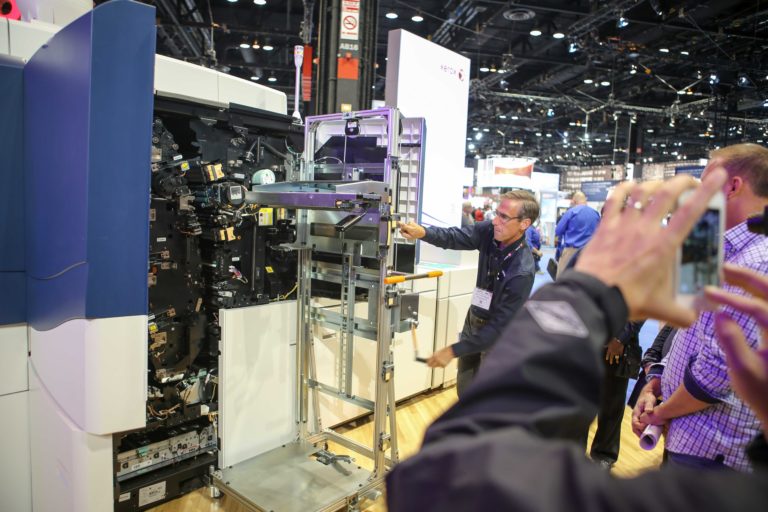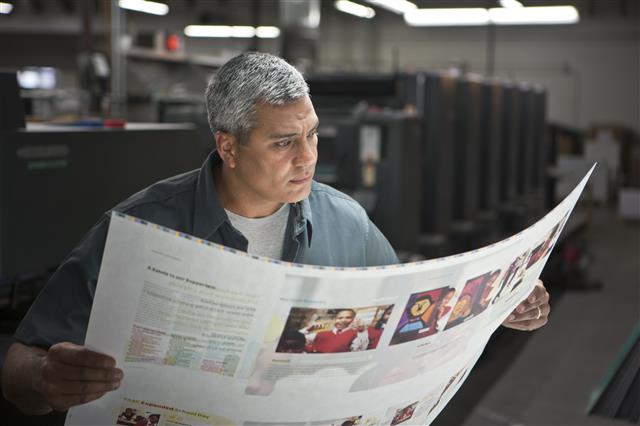
In previous blogs, I have written about inkjet production printing as a disruptive technology and introduced some of the challenges when comparing toner inkjet-based production. But I learned more about earlier this year when I worked on a project that did a head-to-head comparison of toner-based digital presses to inkjet-based digital presses.
For high-volume transactional printers (bills and statements), this has become a critical issue as their leases expire and they have to consider continuing with the same equipment or investing in inkjet equipment. Most transactional in-plants today have fleets of toner-based machines that could be replaced by a smaller number of inkjet production machines.
The question becomes how you compare a fleet of toner-based machines to a fleet of inkjet production presses. In my opinion, the only way to do so is to use a total cost of operation, or TCO, analysis. Obviously you have to include the differences in cost of the equipment, staff, consumables, and productivity. But there are some subtle factors which makes the comparison tricky.
1. If you simply compare the uptime or utilization rate of an inkjet press to a toner-based machine, inkjet presses generally are more productive and cost effective, however, it’s important to keep in mind that they require greater volumes of work in order to be more cost effective.
2. The square footage and staffing requirements can come down dramatically as twelve machines are replaced by four higher-speed continuous feed inkjet devices.
3. Electricity charges can increase significantly with some inkjet technologies out in the marketplace today, especially if big heavy duty dryers are required and if you need to build vents around them.
4. Paper costs can be different as well. While you can save money by buying a greater number of rolls, inkjet paper can be more expensive due to the pretreatment required at the mill. A key benefit of Xerox’s CiPress Product, one of their two lines of inkjet technology, is its waterless ink technology allows it to handle a wide range of plain papers. This eliminates the need for specially treated papers, helps deliver high-quality color on inexpensive plain papers, and results in flat sheets that work well with existing finishing lines. The Xerox Impika products uses High Density (HD) pigment inks that are also well suited for plain papers.
5. A service contract can look completely different as vendors can include the price of the inkjet inks and printer heads as part of the service contract. Furthermore, while the inkjet inks and printer heads are more expensive, some of the inkjet devices are built to allow self-service or user replaceable parts, resulting in fewer trips and lower travel costs.
6. Printers can save money by eliminating their preprinted shell strategy (purchasing pages preprinted from offset press, then overprinting on a toner device). The alternative is to build a white paper factory strategy which can eliminate the costs associated with buying and storing preprinted shells.
7. In-line finishing is a great strategy if you are producing one or two types of application sizes consistently. However, it’s also important to note that jams in the in-line finishing equipment reduce the utilization rate of the entire production line.
If you are considering replacing toner machines with inkjet production machines, don’t forget to consider these and other subtle differences that can have a dramatic affect.
Did we forget anything? Are there other subtle factors you need to consider when moving from the toner-based fleet to an inkjet-based fleet?
—
Howie Fenton is Associate Director of Operational Consulting at InfoTrends. For 25 years, he has worked with in-plants and commercial printers on: benchmarking operational and financial performance, recommendations to increase productivity/reduce costs and strategies to increase value.To email click here.




Comments are closed.